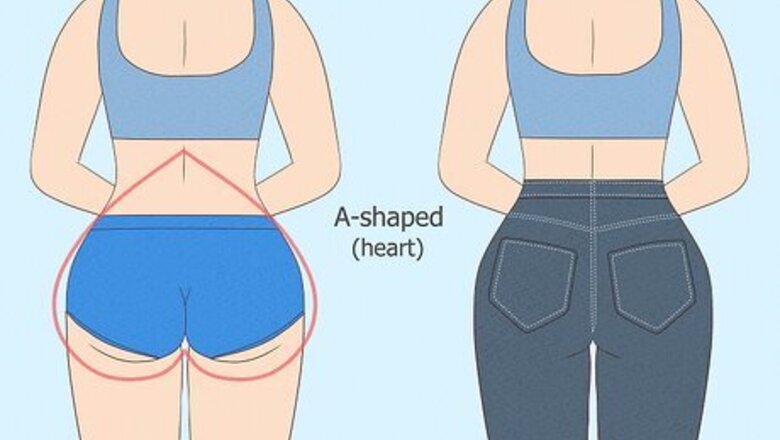
views
Types of Butts & What to Wear With Them

A-shaped (heart) These booties typically appear on people with wide hips. If you look at the shape of the butt, it looks kind of like a capital A from behind—the cheeks are fuller at the bottom and narrower at the top. You can also picture an upside-down down <3 shape if you look at the bottom of the cheeks like the two round humps on the heart. Best underwear for your butt shape: Your thighs are fuller, so wear underwear that has a larger leg hole. Thongs may be especially uncomfortable. Best bottoms for your butt shape: In terms of flattering bottoms, anything high-waisted will really showcase that booty, and you should be able to naturally pull off anything you find comfortable. If you feel too curvy, linen pants and dresses are great options.
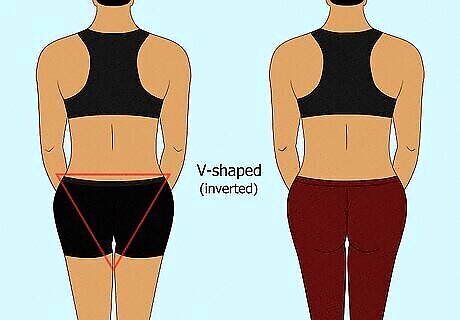
V-shaped (inverted) V-shaped butts are found on people with narrower hips and wider shoulders, which creates a narrow V-shape impression. People with this kind of butt typically have a very easy time appearing tone and thin, although it’s tougher to get that “big booty” vibe. These booties are fuller at the top and get narrower toward the bottom. Best underwear for your butt shape: Avoid anything with high-cut leg holes. Briefs and boy shorts will likely be very comfortable for you. Best bottoms for your butt shape: You have a lot of freedom when it comes to bottoms, since wide hips make any tighter pants or leggings highlight your butt and give it a “lifted” apperance. Dresses that sit comfortably on your hips are great options, too.
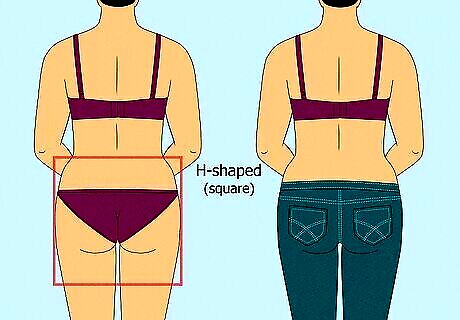
H-shaped (square) This is probably the most common butt shape. People with this butt shape typically have hips and shoulders that line up evenly, creating a boxier, more less curvy appearance in their torso and bottom. Best underwear for your butt shape: Anything that doesn’t ride high on the hip will work. Boy shorts, bikinis, and tangas are always good options. Best bottoms for your butt shape: Low rise jeans, boyfriend jeans, and skirts are all great options. Leggings and dresses with belts can help highlight your butt more.

O-shaped (round) Round butts are what people often picture when someone talks about a “big booty.” Round butts stick out a bit and have that gravity-defying quality you see with people like Jennifer Lopez, Beyoncé, and Ashley Graham. This booty shape is caused by fat distribution—not the skeletal frame. People with these butts have evenly-distributed fat deposits on their rear end. Best underwear for your butt shape: For underwear, stretchiness is key. It’s easy to end up with a frontal wedgie if you have a large, round butt, so look for pieces with extra fabric in the back. Best bottoms for your butt shape: When it comes to bottoms, anything should work so long as it's got enough fabric in the back to fully cover your cheeks.

I-shaped (pancake) People will often refer to people with this butt shape as “flat,” but basically nobody is perfectly flat back there. That said, people with this booty shape tend to have very thin frames that create the appearance of an l-shaped rear end. Best underwear for your butt shape: Full-briefs and boy shorts are your best friend. Thongs are also a great option if you want something more expressive. Best bottoms for your butt shape: The trick here is to look for slimming dresses and pants (usually high-waisted) that will accentuate your hips. Patterns are also great when it comes to bottoms because they can create the illusion of a larger derriere.
How to Change Your Butt Shape

Dietary changes If you want to increase the size of your butt and give it a rounder shape, your body needs an extra 500-1,000 calories a day, so increase the amount of protein, healthy fat, and carbohydrates you consume (while also exercising regularly, which is key). If you want to tone or minimize the overall shape of your butt, start running a caloric defecit. That means your body burns through more calories than you consume every day. Diet alone will not help change your butt safe. You must combine diet with exercise to help tone or build your butt while you gain or lose weight.
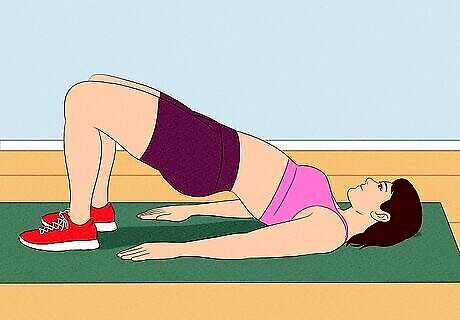
Exercises There are a ton of exercises you can do to improve your butt shape and give it a rounder, tighter look. In general, you want to prioritize anything that helps build your glutes, abs, and quads. Here are some exercises that will help you alter the overall shape of your butt—generally, to make it less saggy and tighter: Hip thrusts Deep squats (the 30-day squat challenge is a great way to start!) Lunges Bridges
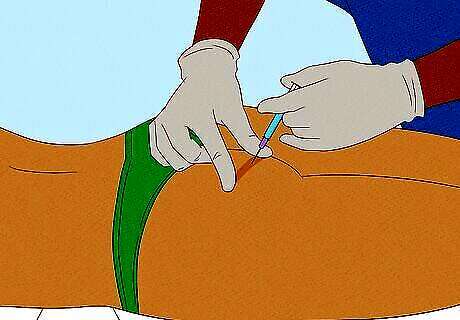
Sculptra Sculptra is a popular and non-invasive dermal filler that smooths out skin by removing wrinkles and adding volume. If you want a very low-effort way to smooth out the shape of your butt and give it a rounder shape, visit a med spa or dermatologist that specializes in the procedure. Sculptra is FDA-approved and extremely safe, but you may still want to talk to a doctor first if you’ve never had dermal fillers before. Sculptra injections typically last 1-2 years, so you may need to get fresh injections periodically to maintain your look. Depending on how many injections you want or need, expect to spend anywhere from $800 to $4,000 on Sculptra.
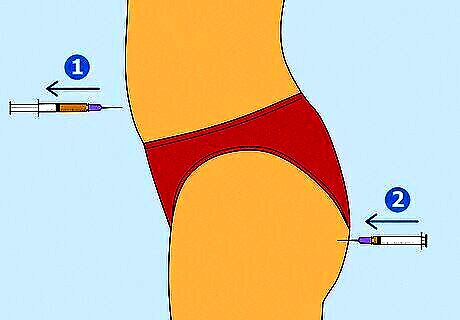
Brazilian butt lift (BBL) The Brazilian butt lift (BBL) isn’t actually a “lift” in the way a facelift or breast lift is—it’s actually closer to liposuction. During BBL surgery, a plastic surgeon removes fat deposits from other parts of your body and injects the fat into your butt to give it a rounder, bigger apperance. Brazilian butt lifts are an invasive surgery. While they’re generally safe procedures, people have died from complications related to this, so it’s best to consult your primary care physician before reaching out to a plastic surgeon. BBL injections are semi-permanent, but their effect can decrease over time. The best way to preserve the look of a BBL butt is to maintain the same weight. BBL surgery often costs $10,000-14,000.
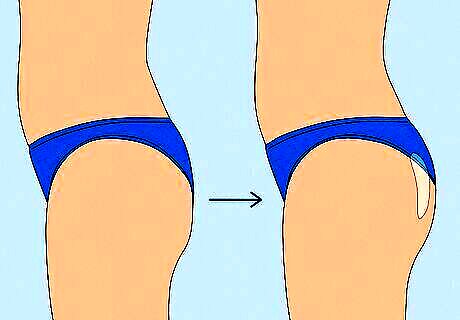
Butt implants BBL surgery relies on your own body’s fat for the injections, while implants involve putting a synthetic material (usually silicone) into your butt. Implants are more permanent than BBLs, but they’re more dangerous, too. This is why most people opt for BBLs these days, although you may want to explore implants if you’re looking for more permanent work or you don’t have enough excess fat for a BBL. Consult your primary care doctor before you visit a plastic surgeon to discuss implants. People with certain health issues (like allergies) are at higher risk of complications, so get the green light from your doctor first. Implants will typically cost $5,000-14,000.
Factors Impacting Butt Shape & Size
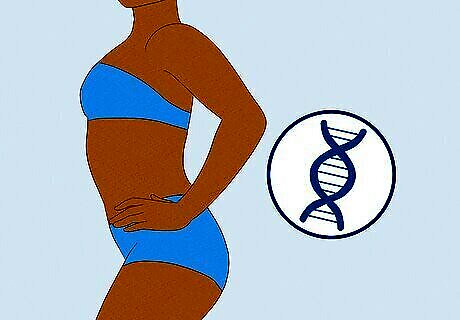
Genetics Your butt shape isn’t really up to you—it’s a consequence of your genetics. It’s been proven that certain genes are responsible for determining how and where your body stores fat deposits. In other words, most people who have naturally voluptuous or round buttocks really just won a genetic lottery. You can certainly adjust the shape of your butt, but where you start out really doesn’t have anything to do with your decisions—your butt is the way it is because you were born that way!
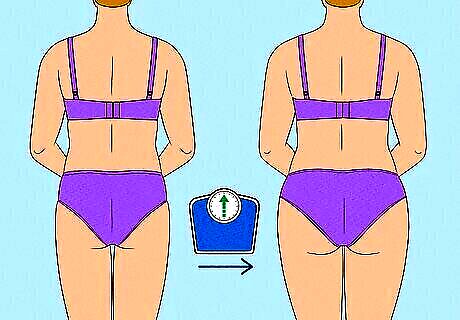
Body weight This is the one factor you can control when it comes to butt shape. You can increase the size of your butt by gaining weight, or decrease the size of your butt by losing weight. In both cases, exercise is the main way you’ll tone and shape your butt. Do not intentionally gain weight if you’re already at the ideal BMI or you’re overweight. The health complications from obesity are not worth a minor cosmetic perk.
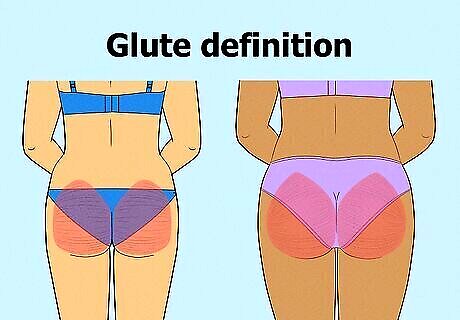
Glute definition Some people have naturally rounded glute muscles, which contribute to the roundness or fullness of their behind. However, like any muscle, the glutes’ shape can change with exercise! Moves that grow and tone your glute muscles will make your butt look bigger, rounder, firmer, and more defined.
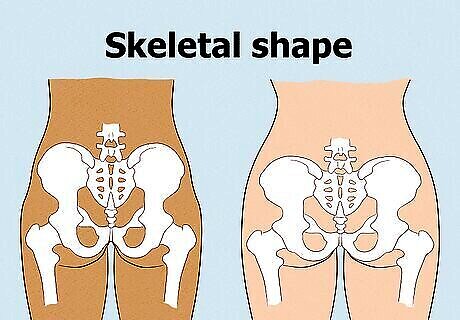
Skeletal shape You cannot add fat or muscle to nothing—everything in your body is anchored around your skeleton. If you have a naturally slim frame, there is only so much you can do to increase the size of your butt. The sacral slope, which refers to the angle of your sacrum, determines how “deep” your butt can be. The steeper the angle, the more of a shelf-like appearance your butt will have. The angle of the pelvis and femur determine how much fat your butt can actually hold without it causuing pain for your joints.
Frequently Asked Questions
Can your butt shape change over time? Yes, your booty—like every part of your body—is subject to change over the course of your life. Your butt will always be restricted based on your skeletal shape and genetics, but it can (and will) change shape as you gain or lose weight, tone your glute muscles, or your skin starts to sag with age.
What is the ideal buttock size and shape? Societally, there is a huge bias in favor of round butts. The classic “Kim Kardashian” booty is round, and every pop culture variation of “I like big butts and I cannot lie” focuses on round butts. That said, there are beautiful rumps of every shape and size, so while society may play favorites, we think the ideal butt shape is all of them.
How can you tell if your butt is mostly muscle or fat? If it’s soft or feels spongy, it’s fat; if it’s firmer and looks defined, it’s muscle. The question is kind of misleading, though—everybody’s butt is a combination of fat and muscle. Since the body stores a lot of fat in the buttocks, it’s unlikely to ever be 100% fat-free unless you can somehow get to near-zero body fat (which wouldn’t be healthy anyway).
What are hip dips and how do they affect butt shape? Hip dips refer to the small indentations where your hips and thighs meet. These small dents are 100% natural, and basically everyone with a healthy BMI and “normal” skeleton will have them. That doesn’t mean they’ll be super visible on every single body, but everybody does have them. They don’t necessarily impact butt shape, but if you have noticable hip dips, you’re more likely to not have a flat butt. Hip dips are usually more noticeable on women because they tend to naturally have wider hips.













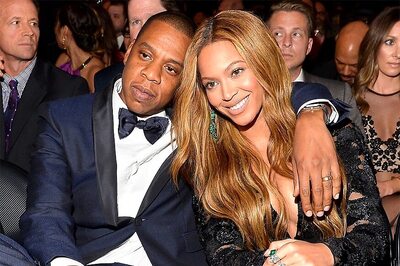






Comments
0 comment